Propeller Slip and How it Affects a Boat’s Performance
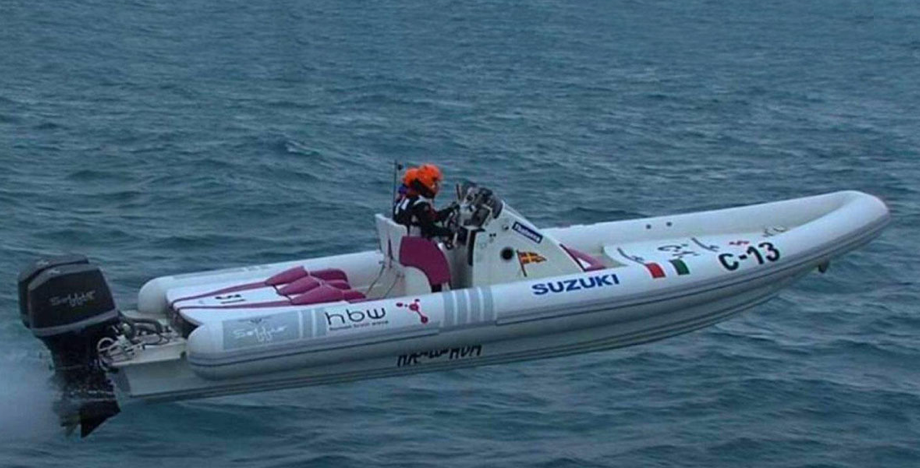
By Thomas P. – Cristiano Segnini
As we are trying to explain how a propeller works, in most of the cases we compare it with a screw that enters wood. But in reality, the propeller operates in the water and thus slides as it rotates. This means that each propeller loses a part of its performance, so the actual distance it finally travels in one revolution is always less than its nominal pitch indicates.
Real World
The difference between the theoretical and the actual distance traveled by the propeller in each rotation and therefore the difference of theoretical from the actual speed is called slip. It is obvious that in every rotation of the propeller the distance the boat covers is less than the one the nominal pitch of the propeller defines.
On the other hand, the slip is necessary because without it we would have no thrust at all. Our aim therefore is not to eliminate the slip but to reduce it to the lowest possible level.
The propeller slip is not a steady factor but is constantly changing, even in a particular combination of engine-boat, depending on their speed. In general, the slip values decrease as the speed of the boat increases. It takes its maximum value just the time the boat goes from displacement to planning (as the big wave which is created under the stern causes a huge increase in hull drag and the boat tries to overcome this wave so as to «jump» on plane), while afterwards its value decreases gradually as the boat is on plane, to reach its smallest value when the boat achieves its maximum speed.
The slip numbers, however, should not exceed certain limits because in that case they affect directly the boat’s performance.
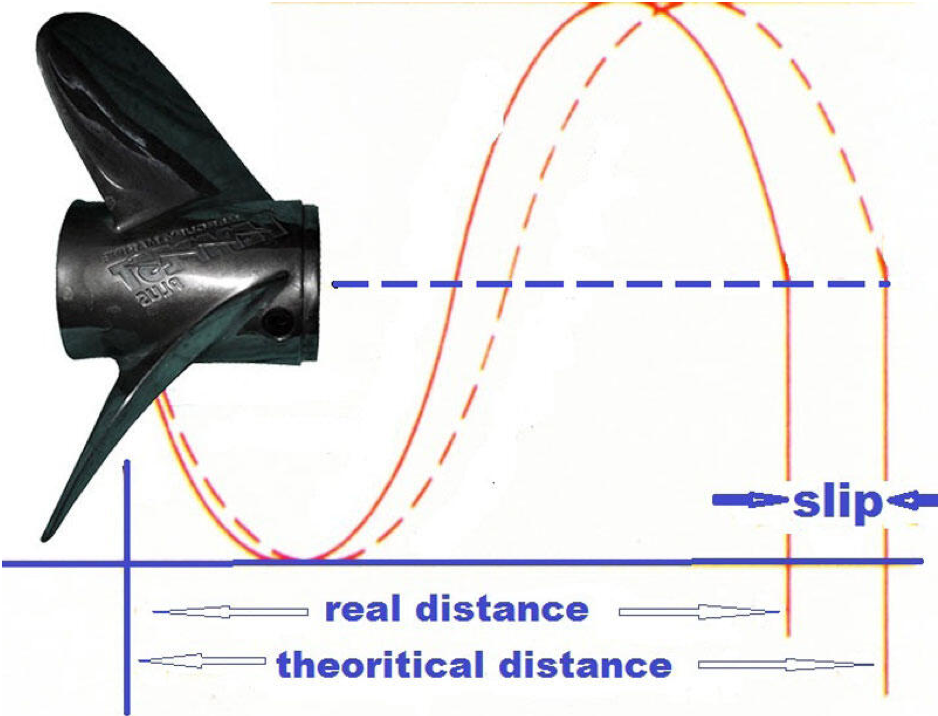
Propeller Slip is Affected:
- By factors related to the engine, the boat and the boat set-up: the type of the hull and its condition, the weight and the aerodynamic design of the boat, the design of the engine’s lower unit, the mounting height of the engine, the loads as well as the design of the propeller itself.
Large diameter propellers have less slip, just like propellers with great amount of cup, which improves their grip on the water and therefore the slip is reduced. - By external factors such as sea state, sea currents or the intensity of the wind.
When, for example, we travel in heavy seas, in a head wind or when our hull is fouled then we should expect an increase in the slip value due to increased resistances our propeller has to overcome. In these situations, the actual speed is reduced and thus the slip is increased.
Of course, it is impossible to estimate the exact percent of slip which each factor causes separately, but we can estimate the total slip caused by all the factors together.
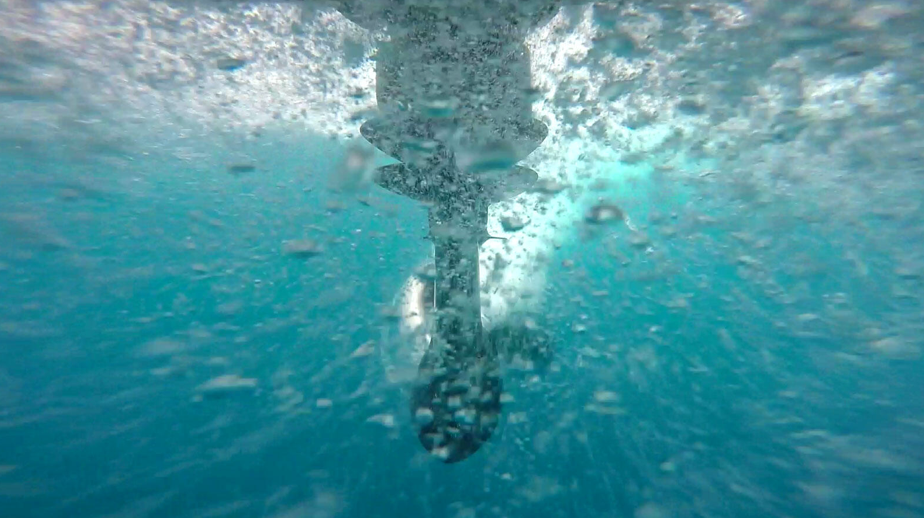
The only way to find the percentage of the total slip is to go for a ride with our boat and carefully record the actual speed over the whole rpm range. We must choose a day without wind and a sea area without waves or currents so as to limit external factors which may affect the slip. So we will be able to focus our attention on the factors related to the boat setup and more easily identify the causes which increase the slip such as the weighing of the boat, the increase of the wetted surface, the mounting height of the engine or probably an inappropriate propeller. Only then we will be able to have a clearer idea of the loads applied to our propeller and thus to improve the setup of our boat, avoiding excessive slip and finally increase the boat’s performance.
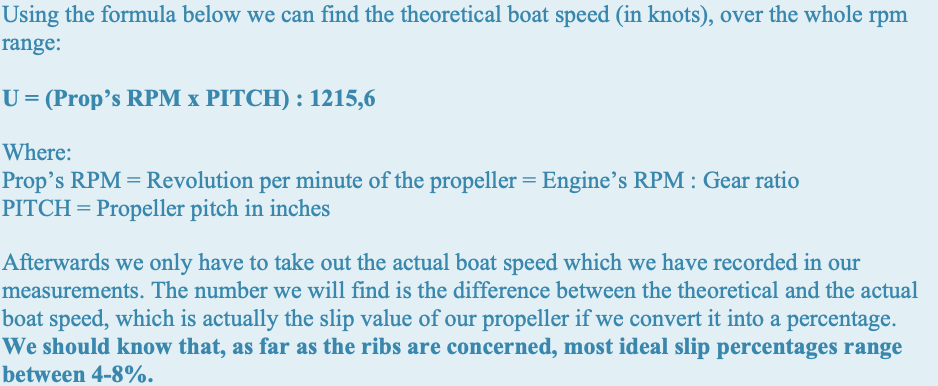
Below is an example of measurements that will show how to calculate the slip of a propeller.
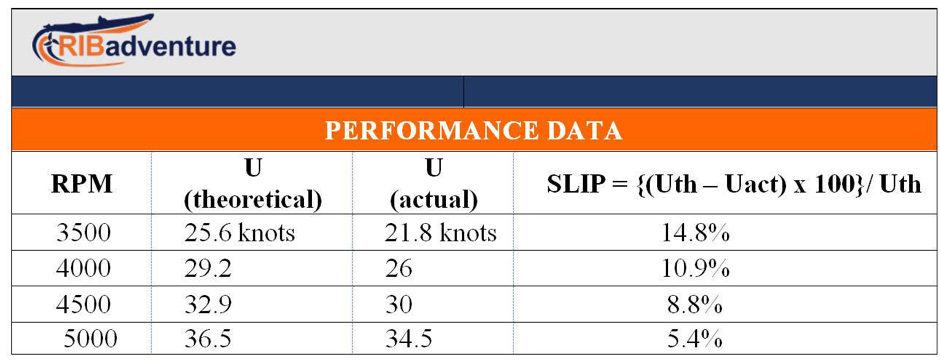
To use a props slip calculator, click here…